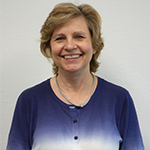No Records Found
Sorry, no records were found. Please adjust your search criteria and try again.
Google Map Not Loaded
Sorry, unable to load Google Maps API.
- Linda
- LaRue Becker
- No
- 11145 Tampa Avenue, Suites 22B & 23B
Porter Ranch
California
91326
United States - Speech for Young Talkers

Porter Ranch
California
91326
United States
I treat speech and language disorders with children of all ages, however I have specialized in Childhood Apraxia of Speech (CAS) for over 10 years. I have treated CAS in children of various ages and differing levels of severity. I am knowledgeable and have experience using various evidence-based therapy techniques for CAS. I apply principles of motor learning theory to teach children speech patterns for producing words and shape them with various cueing strategies (tactile- helping them get into position through touch, verbal-tell them what to do and visual-showing them what to do). The intervention techniques I use most frequently are Dynamic Temporal Tactile Cueing (DTTC), Rapid Syllable Transition Training (ReST), with an emphasis of precise production of vowels and consonants and stringing sounds together to form words. To encourage more natural sounding speech in conversation I work on prosody and stress in words. I work very closely with parents and caretakers teaching them about CAS, what I am doing in therapy and what they can do at home to help their child’s speech.
Parent education, participation in therapy sessions and home practice is an essential part of therapy. Parents are encouraged to be present during the session or to attend a post session conference. Parents are taught how to work with their child at home, incorporate strategies and work to develop functional communication skills.
I strongly believe in combining Augmentative and Alternative Communication (AAC) devices as an important part of CAS intervention if the child is nonverbal or spoken words are unintelligible. It's important to give the child a means to communicate using AAC as they are increasing and improving their verbal communication skills. Each individual child's needs, developmental status and support system are considered when an AAC device is chosen. It may be an electronic AAC device, AAC app on an iPad, PEC's book, picture communication boards or ASL signs and gestures. The ultimate goal is to replace the AAC device with spoken language, but each individual child will have a different potential and levels of support needed.




